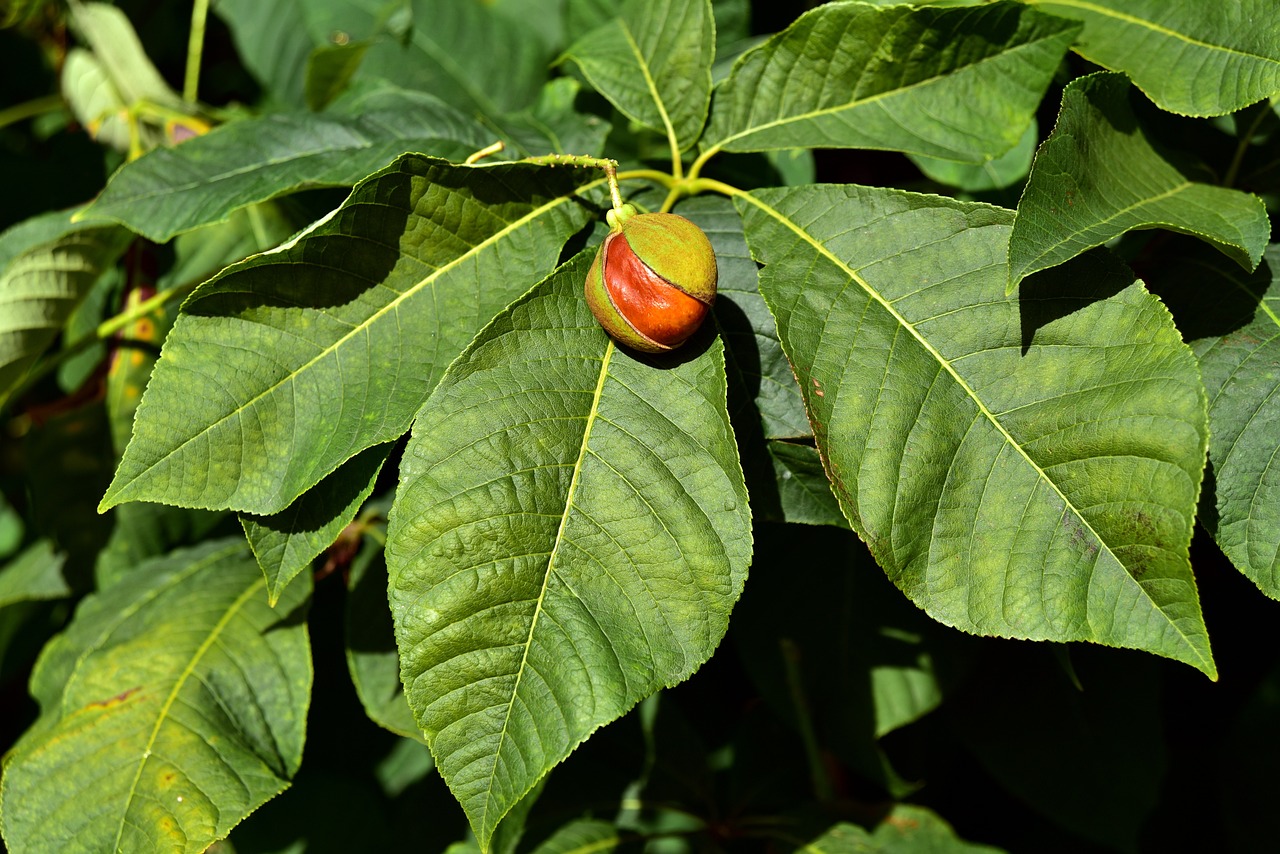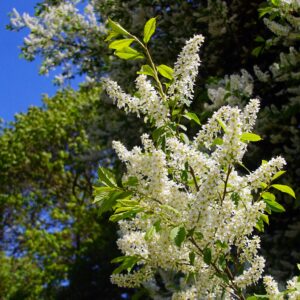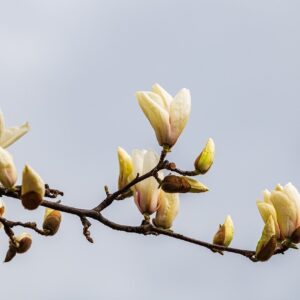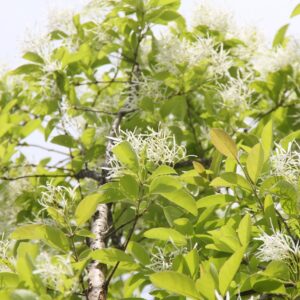The Ohio Buckeye (Aesculus glabra) is a deciduous tree native to the central and eastern United States, known for its distinctive foliage and ornamental appeal. Ohio Buckeye (Aesculus glabra) is an attractive and distinctive tree that adds seasonal interest to gardens and landscapes. Its unique features and adaptability make it a popular choice for a variety of settings.
Appearance:
Size: Ohio Buckeye typically grows 20-40 feet (6-12 meters) tall and about 15-30 feet (4.5-9 meters) wide. It has a rounded, open canopy and a moderately dense growth habit.
Leaves: The leaves are palmately compound, meaning each leaf is divided into 5-7 leaflets arranged around a central point. Each leaflet is about 4-6 inches (10-15 cm) long, ovate to elliptical, and has a serrated edge. The leaves are dark green and turn yellow to golden brown in the fall, providing seasonal color.
Flowers: In late spring to early summer (typically May to June), the tree produces showy, upright clusters of small, greenish-yellow to yellow flowers. Each flower is tubular with a noticeable white or light yellow throat, and the inflorescences can be 4-6 inches (10-15 cm) long. The flowers have a slightly sweet fragrance.
Fruit: The fruit is a spiky, leathery capsule that contains 1-2 shiny, dark brown seeds (buckeyes). Each fruit is about 1-2 inches (2.5-5 cm) in diameter. The seeds are often used in crafts and as decorative elements. They are toxic if ingested, so caution is advised.
Bark: The bark is light gray to brown and relatively smooth on young trees. As the tree matures, the bark becomes more ridged and furrowed.
Habitat: The Ohio Buckeye is adaptable and can be found in a variety of habitats, including upland woods, floodplains, and along riverbanks. It prefers well-drained soils and can tolerate both sandy and clayey soils. It is hardy in temperate climates, typically found in USDA Hardiness Zones 4 to 7.
Uses:
Ornamental: The Ohio Buckeye is valued for its attractive foliage, distinctive flowers, and interesting fruit. It is often used in landscaping as a specimen tree, in naturalized areas, or as part of mixed woodland plantings.
Cultural: The buckeye is the state tree of Ohio, and its seeds are considered good luck charms. The seeds, often referred to as “buckeyes,” are used in various crafts and as tokens of good fortune.
Ecological: The tree provides habitat and food for wildlife. The flowers attract pollinators like bees and butterflies, while the seeds are eaten by birds and small mammals.
Care:
Pruning: Prune Ohio Buckeye in late winter or early spring before new growth begins. This helps maintain the tree’s shape and removes any dead or damaged wood.
Watering: The tree is relatively drought-tolerant once established but benefits from regular watering during dry periods. It prefers consistently moist soil but can adapt to occasional drought.
Fertilizing: A balanced, slow-release fertilizer applied in early spring can support healthy growth and flowering. However, the Ohio Buckeye is not overly demanding in terms of fertilization.





